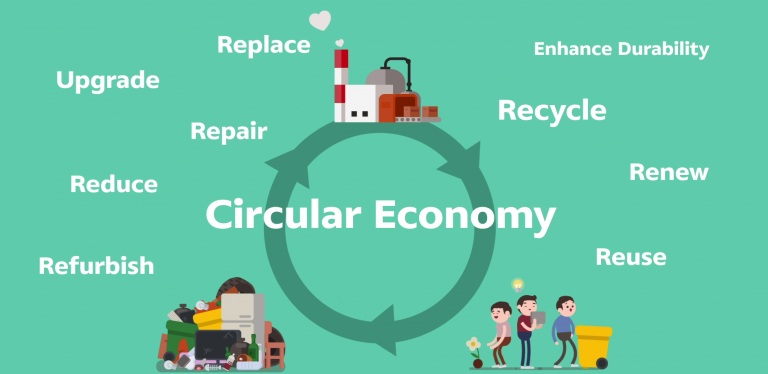What is "Circular Economy" system
10 June 2021
Post by Admin

New business opportunities for sustainability
An important of Circular Economy
Today, the world is facing the challenge of rapid population growth, resulting in the ever-increasing demand for natural resources on top of accelerated environmental degradation including global warming, climate change, and excessive waste, especially plastic debris in the ocean. These issues require the involvement of all sectors to tackle these impediments.
What is Circular Economy
The Linear Economy is based on the one-way processes of “Make-Use-Dispose” without recycling obligations. The linear economy model produces many negative impacts at a global scale in which prompts the world to change.
The Circular Economy is a regenerative economic system applied across the value chain to increase management efficiency of waste, raw materials, end-of-life products, and energy to circulate continuously in a proper closed-loop system.
The circular economy, therefore, is not simply a matter of recycling. Rather, it begins with designs that can be manufactured with minimum resources and maximize useful life. They should also allow maximum material recovery, possibly with proper storage and sorting on the user’s part. Any products that can no longer be used in their original forms should at the very least be convertible into fuels.
The Circular Economy is a new economic business model, offering a new way of looking at relationships between markets, customers and natural resources as well as harnessing the potential of emerging disruptive technologies to move from “Make-Use-Dispose” toward “Make-Use-Return.”
The goals and guidelines of the Circular Economy are to maximize the value of resources while minimizing the use of new resources by creating a series of circular approaches ranging from re-process, re-design, added value, innovation, collaboration with business and non-business related and reuse. The model is building better values and a more sustainable environment, community, society, and business.
5 Ways to design the circular economy
1. Product Design: Design a more durable and longer-lasting product that facilitates material separation for recycling or reusing or product with fewer materials while maintaining the same functionality.
2. Resource Input: Utilize recycled and reused raw materials or opt for renewable resources in production and integrate renewable energy in manufacturing processes.
3. Manufacturing: Maximize the resources utilization and leverage automation to increase precision in the manufacturing process at the same time diminishing production waste and lowering water and energy usage.
4. Sale and Distribution: Promote environmentally-friendly logistics, leasing services, and sharing platform to improve sales and distribution efficiency, as well as harnessing digital technologies for data collection to aid optimization in sales and distribution.
5. Product Use: With the more durable and disassemble product plus maintenance service, the product lifetime is extended for the longest possible time.
6. Recovery: Properly process the end-of-life product with appropriate strategies to avoid landfill and keep end-of-life materials as long as possible in the production and consumption cycle by applying regenerative approaches, i.e., recycling and reusing and waste-to-energy process.
Source: https://www.scg.com/sustainability/circular-economy/en/scg-circular-way/
https://www.allaroundplastics.com/en/article/sustainability-en/2373
